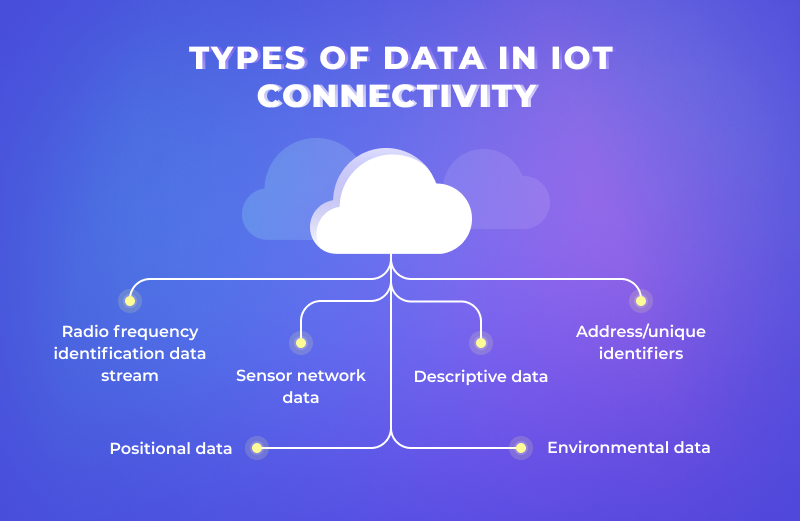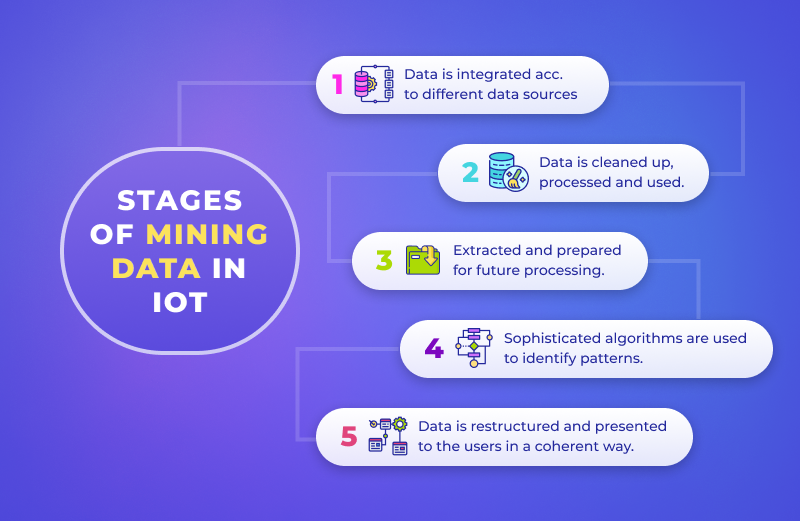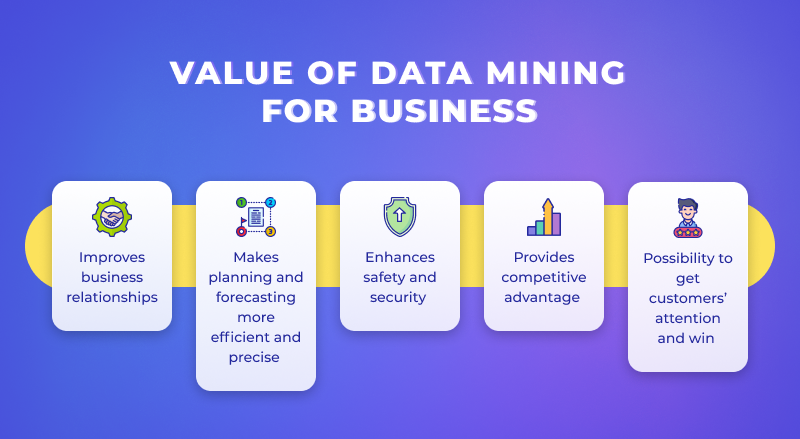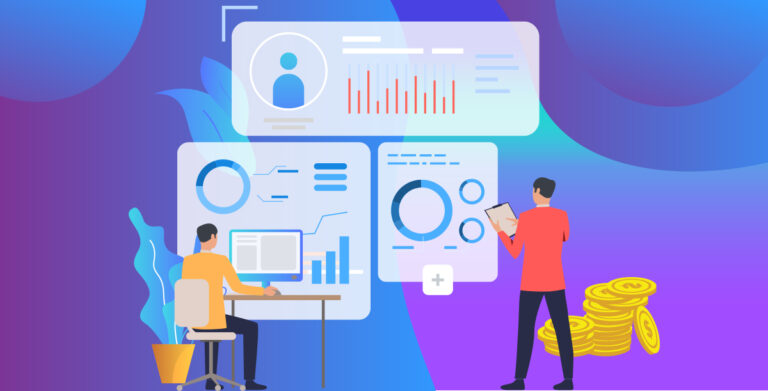Smart IoT connected environments generate huge amounts of raw data. To become more data-driven, it is not enough for business owners to just collect and store large amounts of data. Namely, there is a need to select and synthesize the most appropriate algorithm using data mining for IoT. You should extract the maximum value and based on the insights take strategic business decisions. It will also produce valuable analytics and accurately predict future events.
This article will discuss the main data mining techniques, big data mining issues in IoT, and models. It will cover issues of how the application of data mining in IoT enables the useful accumulation of tremendous amounts of data generated from heterogeneous environments and transformed into valuable insights that can be used to the great benefit of the organization. It allows more data-driven decision-making, boosts performance, enables efficient management of resources and services.
The Role of Data mining and processing in IoT technology
According to the research, IoT technology plays a pivotal role in covering traditional equipment to general household objects. The IoT systems generate huge amounts of data. Raw data is flawed and also contains lots of mistakes, various types of data; data mining is something that allows structuring the data, extracting the needed knowledge that can be further used for effective decision-making.
The centralized middleware (i.e. data mining algorithms) helps simplify the process of software development for IoT, extract useful analytical insights, enhance security as well as support the interoperability of connected devices.
Interesting insights about data mining:
- It is applied to various forms of data;
- Data mining acts as a base for ML and AI;
- Application of Data mining in IoT offers comprehensive information about the connected assets and their data interchange – the baseline (normal communication between the devices);
- Data mining is used when you need to customize your baseline and use the data insights for your specific business needs.
The main challenges and key issues in data mining
IoT-connected devices generate complex data types, including sensor data, radio frequency identification data, two-dimensional code, video data, and image data. This diverse nature presents a number of challenges for data mining in IoT. According to the research, apart from the choice of the suitable algorithms, environment, and providing privacy and data security, and interoperability, there are some more pain points to deal with.

Here is the list of challenges associated with the application of data mining in IoT:
- Security – the presence of multiple devices in IoT connections offers multiple decentralized points of entry for malware. Such connection models create more security and complexity issues. Usually, security measures are designed for a specific set of data with certain characteristics.
- Standardization efforts and the emergence of standard protocols such as Message Queue Telemetry Transport (MQTT) and Advanced Message Queuing Protocol (AMQP), Lack of standards that guarantee interoperability of devices. It requires more data transformations.
- Scalability. Data mining algorithms should be efficient and scalable enough to dig the insights from voluminous sets of data in datasets.
- Unique identification of each device.
- Privacy is also a serious concern when it comes to connected networks containing a great deal of personal information.
- Algorithms and models. The choice of the right data mining algorithms the best suitable IoT data mining model plays an important role in IoT data review and extraction.
However, realistically, big data mining issues in IoT are possible to overcome with some help from a reliable tech partner. Altamira experts guarantee the security and privacy of your IoT-connected devices and their data. They provide centralized monitoring and offer security management through all stages of development and after deployment.
The emergence of 5G networks will enable the swift and speedy transmission and exchange of massive amounts of data. Cloud infrastructure is, in turn, scalable enough to accommodate this plentiful supply of data. An advanced team of experts offers scalable and multi-featured solutions that will purposefully be built to be a perfect fit for your business needs. Transparency, security, reliability, advanced expertise, and full dedication are the reasons why our clients time and again choose Altamira as a tech partner!
Data mining in practice – main techniques, methods and algorithms
Fundamentally, data mining is based on three major technical notions – statistics( mathematical algorithms), artificial intelligence, and machine learning.
IoT data can be:
– multimodal and heterogeneous;
– noisy and incomplete;
– unbalanced and biased;
– dependent on time and location;
– dynamic, different data quality;
– almost always require real-time analysis.
IoT data is aggregated from various resources, which can be noisy and heterogeneous. In the process of extraction of useful information, the data can be characterized as being uncertain and incomplete in the initial stages. Using IoT data mining helps solve two important tasks – defining the regular links between the data elements and using them to solve prediction problems.
Data mining involves analysis of tremendous volumes of diverse data sets with the goal of obtaining valuable knowledge. Analyzing data generated by IoT in data mining processes are broken up into multiple stages, as follows:

Data mining models and algorithms
The IoT-powered connections can vary from being small-scale to large-scale, having various capabilities and limitations. Raw data being generated from these connections also has various characteristics. The ability to make devices respond to users’ actions requires data mining. The usage of raw data generated by IoT in data mining algorithms does not provide the desired outcomes. It is necessary to choose the best DM (Data Mining) methods and algorithms to add more value to one’s business and make devices more personalized for every user.
The multi-layered data mining model
This model is divided into four layers: data collection, data management, event management, and data processing service.
- The data collection layer adopts devices to collect the smart data. Different stages require different data collection strategies. This layer solves several problems, including repeated or wrong data reading, data filtering, and communication.
- The data management layer operates the centralized distributed database or warehouse. Here, the data identification, abstraction, and compression take place. All these insights are saved in the corresponding database or warehouse. This layer connects smart objects with each other.
- The event management layer is used to analyze IoT events. Primitive and complex events are filtered, or events that concern the user are obtained.
- Data mining service is based on event management and data processing. Classification, forecasting, clustering, patterns mining, and association analysis services are provided for apps at this layer.
Distributed model
Mass data of IoT is stored in different places. It creates a challenge for centralized data mining architecture. Moreover, large-scale data generated by IoT in data mining should be processed in real-time. The security and privacy issues are also solved by striding the data in various places. Thus, a distributed model presupposes sending the data to the distributed nodes, and then, after pre-processing, data is sent to the central receiver. This layer allows splitting problems into smaller ones and eliminates the problem of high storage capacity and high-performance requirements. The global control node manages the whole system. It chooses the Medes algorithms and data set for analysis. Sub-nodes receive raw data from various storage types. Next, these local models are obtained by filtering events, complex detection, and mining data in local nodes. Then they are submitted to the global control node and aggregates together from the global model.
The grid-based data mining model
A new computer infrastructure – Grid, is able to implement high-performance and large-scale apps. Various computing, data, and device resources can be accessed and used conveniently. IoT devices serve as a kind of resource for Grid computing and thus the same data mining services that Grid uses, can be applicable in IoT.
Data mining model for IoT
This model receives data from context-awareness of individuals, smart connections, or environments. Trusted control plane ensures the credibility and controllability of data transmission. Data mining tools and algorithms allow users to submit acquired knowledge to various types of apps, such as logistics, smart transportation medicine, etc.
Application of DM algorithms for IoT data
To choose the right algorithms for data mining techniques for IoT, one needs to define the task and aim of the analysis. Here are some basic algorithms used for data mining in IoT:
Classification – this technique enables you to assign items into distributed categories. There are two categories that are most widely used in IoT – supervised and unsupervised learning. Classification allows to assume prior knowledge and guides the partitioning process, building the set of classified clusters representing the possible distribution process. This algorithm allows us to solve the challenge of uncertain and incomplete IoT data. Classification presupposes a variety of methods, including decision tree learning, naїve Bayes classifier, k-nearest neighbor classifier, classification with neural network and regression methods such as linear regression and logistic regression, etc.
Clustering – the technique is aimed at identifying similar patterns in the input data. The important parameter here is to determine the similarities between the individual clustered objects. The main categories of clustering algorithms include Partitioning-based clustering; Hierarchical clustering; Grid-based clustering; and Density-based (DB) clustering algorithms. Such algorithms assist in:
- high-dimensional data processing;
- finding the clusters of the same size and density to uncover correlations between the functions to facilitate the decision-making;
- provides interpretable results.
Frequent pattern mining – the technique presupposes tracing of frequently repeatable patterns to extract valuable data insights. The ASIC prerequisites include:
- Determining the significant parameters;
- Making sure that the model is compact;
- Adaptability of the model for the effective analysis of the latest relevant info and extraction of relevant data patterns.
Association analysis – in this method one looks at and chooses interesting patterns that satisfy certain existing needs. However, the patterns chosen should be informative enough for further analysis. Association analysis is to be applied with unknown patterns. It identifies the association with input and output data, identifies the factor for qualitative separation of variables into classes and describes relationships between these events. This method allows us to generate a huge number of association rules. It is necessary to focus on the most interesting ones.
Mining of massive data sets (CRISP DM methodology)
CRISP-DM (Cross Industry Standard Process for Data Mining) is an interdisciplinary methodology for dealing with the analysis of massive IoT data sets. It uses six steps – understanding of the business, understanding of data, data preparation, modeling, evaluation and deployment.
Map reduce – For the parallelization, scalability, load balancing, and fault-tolerance – there is MapReduce, which is widely used in cloud platforms for query processing for IoT data analysis.
Choice of the Data mining techniques for IoT data depends on the tasks of the data and the type of data we deal with. Choice of the right algorithms allows to clean the data, convert it into the needed formatting, and reduce the massive data sets. It helps develop, control and monitor the IoT-based application in different areas.
Data mining value for various industries
Data mining can be applicable in all kinds of industries. A great value for businesses. Here are the most widespread use cases of IoT data mining for various business niches:
| Industry | Value of data mining |
| Retail |
|
| Finance |
|
| Robotechnique |
|
| E-commerce |
|
| Healthcare |
|
| Agriculture |
|

Make IoT smarter with Altamira
Altamira is a company that delivers solutions in the field of IoT, data mining and processing with the help of AI/ML technologies. We have gathered a team of more than 70 software engineers who have mastered the best tools and techniques to build technology that maximize business efficiency.
Understanding the importance of data analysis for IoT devices, we use the best methods and techniques to implement the best AI algorithms for making data structured and recognisable. We utilize computer vision technologies to enable apps to identify the objects and data using special data processing algorithms. It allows maximum efficiency in data and object identification. Our experts use azure cognitive services for object analysis and recognition
Our customers choose us, because:
- We guarantee the full transparency of project delivery enabling the customer to control every process at any stage;
- Security is a priority for us. We implement security testing from the preliminary stages of development and guarantee the efficient fraud and data leaks prevention;
- Fast time to market distinguishes our team from the other tech partners;
- Rich tech stack and utilization of AI/ML tools enables efficient data processing and extracting valuable business insights;
- Cloud deployment makes our apps scalable enough to suit the business demand and store large data volumes.
We have successful experience delivering IoT projects utilizing efficient data processing methodologies:
Mutag – IoT project
It was a project, oriented on building an app for the management of the MuTag device. It is attached to any item that can be missing or requires identification of its location. The app is connected to the device, mobile phone and attached MuTag device is connected to the passport. This connectivity generates huge amounts of data and our experts managed to implement AI/ML tools, implement the necessary API and deploy the app that perfectly serves the required functions.
CTRL Golf – a smart glove for training
It is an IoT application that connects to the sensors (developed by the CTRL Golf team) attached to the golf sleeve, which catches your wrist and shoulder movements during the swing. Based on the training statistics, the app generates detailed and highly visualized reports reflecting the exercising results and overall progress of a person. Statistics are available for all time, particular training or even just a session within training and build data, which is successfully processed. Based on the extracted insights the player can improve one’s skills and polish them.
Bottom line
We live in the world of connected devices, which generate a lots of heterogeneous data, which can turn into a valuable business tool if processes and analyses are set up correctly. It is quite challenging to extract the needed information from huge amount of messy data generated by various types of devices. For this purpose, we use data mining in IoT. It contributes to the construction of smart systems and provides convenient services with the help of best suitable data mining techniques in IoT. Different algorithms, including classification, clustering, association mining etc. allow discovering the novel, extremely valuable patterns from large data sets and extracting valuable information for helping make more informed business decisions that are data-based.






